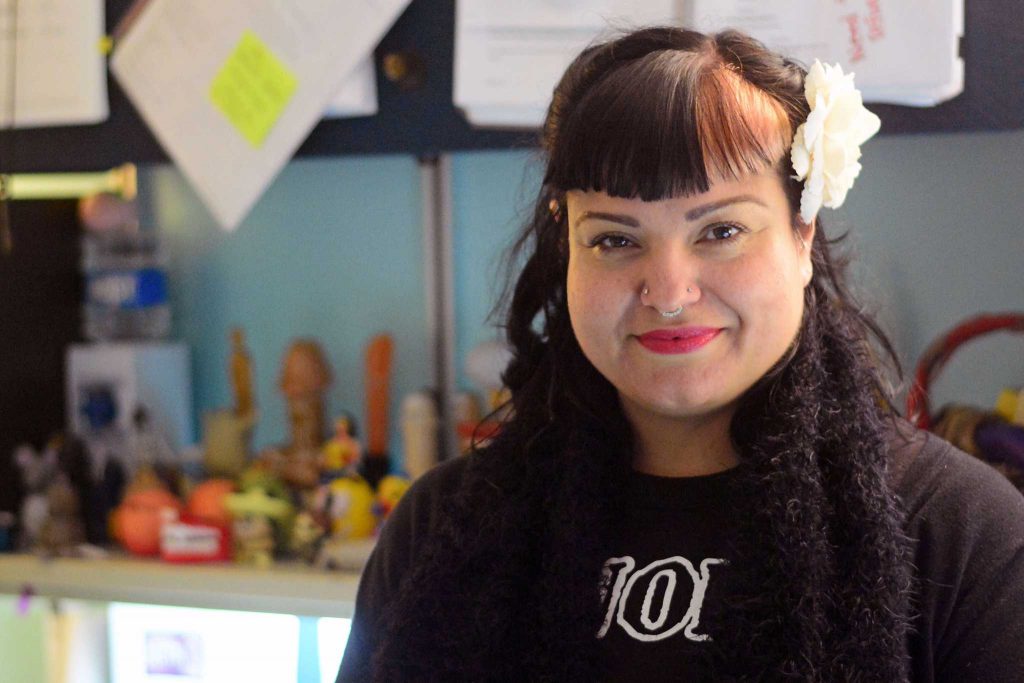The watermelon pink shirts with a recognizable PEACH symbol used to be a common sight in the quad and many could recognize them at first glance. The shirts were worn by members of Peer Education Advocating Campus Health created in 2005 to serve students through workshops, educational programs, and counseling services.
They have been missed this year in the student center and in the sea of tables in the quad. However, PEACH hasn’t disappeared. Rather, they have evolved.
All three PEACH programs have been transformed into the Health Promotion and Wellness Unit, a new resource created to centralize support for mental health, sexual health, nutrition, food insecurity, substance abuse and sexual violence.
“They were separate peer programs that we felt could come together as a team and create (a single) peer program,” said Rick Nizzardini, interim director of health promotion and wellness. “It would be more efficient, more effective and do more things.”
Ingrid Ochoa, also known as “Mama Peach,” was the lead for Sexual Health PEACHes, offered some insight into the new and expanding program.
“We’re growing so we’ve been telling people they have to be flexible because yes in the past we’ve provided workshops and all these outreach events but we do want to shift in what we’re providing,” Ochoa said.
Ochoa explained that each chapter –– sexual health, wellness, and nutrition –– were disconnected. Although they were all offering educational preventative programs, housed in the Student Health Services Building, the different units usually never crossed over.
“The VP of student affairs, Luoluo (Hong), saw that we had two great programs that we can unite and become one bigger program so we could provide the resources and the services,” Ochoa said.
Because the three chapters of PEACH were each run by a single person, it often put a lot of strain on the lead to oversee the entirety of sexual health or the entirety of nutrition.
There were also some obligations PEACHes were required to commit to once enrolled in PEACH. Students were required to dedicate 10 hours a week and interns dedicated 20 because of how demanding the curriculum was. This often excluded students who couldn’t put in the hours because of their workload or because they also had part-time jobs.
“We were part of the health center but we really didn’t have a house to really have the support that we needed to really expand our services,” Ochoa said. “So we did as best as we could with what we had.”
The merging of the programs not only took PEACH out of the student health center but also made it possible for the program to offer a paid internship. Because of the changes to the program, as well as including an ambassador program, students are no longer required to put in 10 hours a week and meet every Friday, making it easier for more students to volunteer even if it’s only an hour or two.
Nizzardini continued, “We’ll still do things like working with students individually to change behaviour (and) also talking about how do we get university partners to change the environment.”
PEACH members were not completely left in the dark on what was happening with the program.
“It was a change for them too to know that the way that things had been going was going to be shifting,” Nizzardini said.
Ochoa explains the organization is not entirely gone. Some past sexual health PEACHes are working with the residential housing association in hopes to form a student ran PEACH group that would focus mostly on freshmen and undergraduates in the dorms.
Derek Raskin, past PEACH member and SF State graduate, offered his insights into the program. Raskin felt many things could have been changed to help PEACH provide better outreach programs and opportunities.
“The class was heavy. We had this huge, thick book and pretty much there was on-site training and on-site educating at the same time,” Raskin said. “People would come up with real problems and we’d give textbook answers. Life just doesn’t work like that.”
Because of the lack of resources and room, PEACH operated from Student Health Services, but had a tough time carrying out the outreach they wanted to. Which showed in the time Raskin was a PEACH.
“I was really hoping that we would work outside the campus. That’s something we weren’t doing. We were working within a very small circle,” Raskin said. “Our message was very wide but our target audience was so small. We could have easy went off campus.”
Raskin does have hope for a student run PEACH in the dorms and feels positive it could work out.





